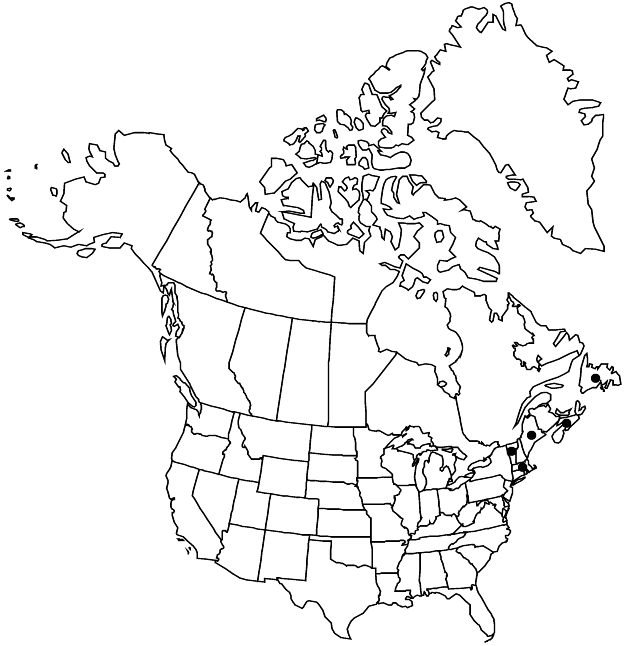Difference between revisions of "Bistorta officinalis"
Fl. Auvergne ed. 2, 2: 516. 1800.
FNA>Volume Importer |
imported>Volume Importer |
||
| (5 intermediate revisions by 2 users not shown) | |||
| Line 8: | Line 8: | ||
}} | }} | ||
|common_names=European bistort | |common_names=European bistort | ||
| − | |basionyms={{Treatment/ID/ | + | |special_status={{Treatment/ID/Special_status |
| + | |code=I | ||
| + | |label=Introduced | ||
| + | }} | ||
| + | |basionyms={{Treatment/ID/Basionym | ||
|name=Polygonum bistorta | |name=Polygonum bistorta | ||
|authority=Linnaeus | |authority=Linnaeus | ||
| + | |rank=species | ||
| + | |publication_title=Sp. Pl. | ||
| + | |publication_place=1: 360. 1753 | ||
}} | }} | ||
|synonyms={{Treatment/ID/Synonym | |synonyms={{Treatment/ID/Synonym | ||
|name=Bistorta major | |name=Bistorta major | ||
|authority=Gray | |authority=Gray | ||
| + | |rank=species | ||
}} {{Treatment/ID/Synonym | }} {{Treatment/ID/Synonym | ||
|name=Persicaria bistorta | |name=Persicaria bistorta | ||
|authority=(Linnaeus) Sampaio | |authority=(Linnaeus) Sampaio | ||
| + | |rank=species | ||
}} | }} | ||
|hierarchy=Polygonaceae;Polygonaceae subfam. Polygonoideae;Bistorta;Bistorta officinalis | |hierarchy=Polygonaceae;Polygonaceae subfam. Polygonoideae;Bistorta;Bistorta officinalis | ||
| Line 33: | Line 42: | ||
|elevation=10-200 m | |elevation=10-200 m | ||
|distribution=Nfld. and Labr. (Nfld.);N.S.;Maine;Mass.;Vt.;Europe;Asia. | |distribution=Nfld. and Labr. (Nfld.);N.S.;Maine;Mass.;Vt.;Europe;Asia. | ||
| + | |introduced=true | ||
|discussion=<p>Chromosome numbers of 2n = 24, 44, 46, 48, and ca. 50 have been reported for <i>Bistorta officinalis</i> (B. Jonsell and T. Karlsson 2000+, vol. 1). A count of 2n = 48 made by Á. Löve and D. Löve (1988) was from a plant from California; it probably was cultivated.</p> | |discussion=<p>Chromosome numbers of 2n = 24, 44, 46, 48, and ca. 50 have been reported for <i>Bistorta officinalis</i> (B. Jonsell and T. Karlsson 2000+, vol. 1). A count of 2n = 48 made by Á. Löve and D. Löve (1988) was from a plant from California; it probably was cultivated.</p> | ||
|tables= | |tables= | ||
| Line 42: | Line 52: | ||
-->{{#Taxon: | -->{{#Taxon: | ||
name=Bistorta officinalis | name=Bistorta officinalis | ||
| − | |||
|authority=Delarbre | |authority=Delarbre | ||
|rank=species | |rank=species | ||
| Line 57: | Line 66: | ||
|publication title=Fl. Auvergne ed. | |publication title=Fl. Auvergne ed. | ||
|publication year=1800 | |publication year=1800 | ||
| − | |special status= | + | |special status=Introduced |
| − | |source xml=https:// | + | |source xml=https://bitbucket.org/aafc-mbb/fna-data-curation/src/2e0870ddd59836b60bcf96646a41e87ea5a5943a/coarse_grained_fna_xml/V5/V5_1213.xml |
|subfamily=Polygonaceae subfam. Polygonoideae | |subfamily=Polygonaceae subfam. Polygonoideae | ||
|genus=Bistorta | |genus=Bistorta | ||
Latest revision as of 22:08, 5 November 2020
Plants (20–)30–100(–120) cm; rhizomes contorted. Stems 1(–2). Leaves: ocrea brown, cylindric, 15–50(–70) mm, margins oblique, glabrous; petiole attached proximally to sheath 10–45(–70) mm, prominently winged distally, 100–260 mm, wing 1–6(–12) cm; blade lanceolate to ovate, 6–15(–21) × 2.5–9(–10) cm, base abruptly contracted, truncate to cuneate, often asymmetric, margins entire or obscurely and irregularly repand, usually wavy, apex acute to acuminate, rarely obtuse, abaxial face glabrous or pubescent with whitish or brownish hairs, glaucous, adaxial face glabrous, not glaucous; cauline leaves 3–6, petiolate proximally, sessile distally, gradually reduced distally, blade triangular-lanceolate to linear. Inflorescences 1, short-cylindric to ovoid, 35–65 × 12–20 mm, bulblets absent; peduncle 1–15 cm. Pedicels ascending, 1.5–7 mm. Flowers 1–2 per ocreate fascicle; perianth pink; tepals elliptic to ovate, 3–4 mm, apex obtuse; stamens exserted; anthers pink to purple. Achenes brown, 3.3–4.5 × 2.5–3 mm, shiny, smooth. 2n = 48.
Phenology: Flowering May–Aug.
Habitat: Fields, meadows
Elevation: 10-200 m
Distribution

Introduced; Nfld. and Labr. (Nfld.), N.S., Maine, Mass., Vt., Europe, Asia.
Discussion
Chromosome numbers of 2n = 24, 44, 46, 48, and ca. 50 have been reported for Bistorta officinalis (B. Jonsell and T. Karlsson 2000+, vol. 1). A count of 2n = 48 made by Á. Löve and D. Löve (1988) was from a plant from California; it probably was cultivated.
Selected References
None.